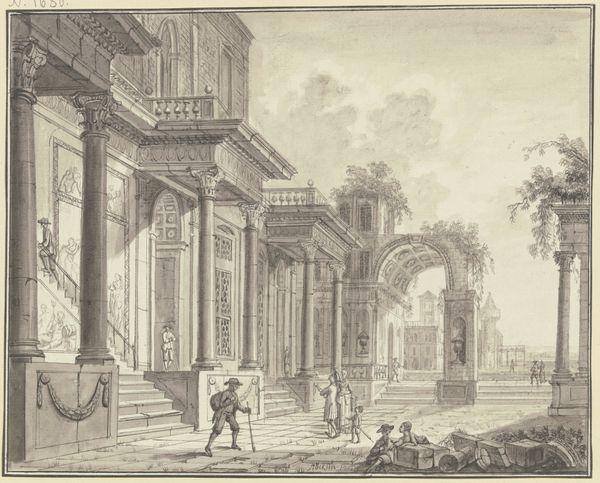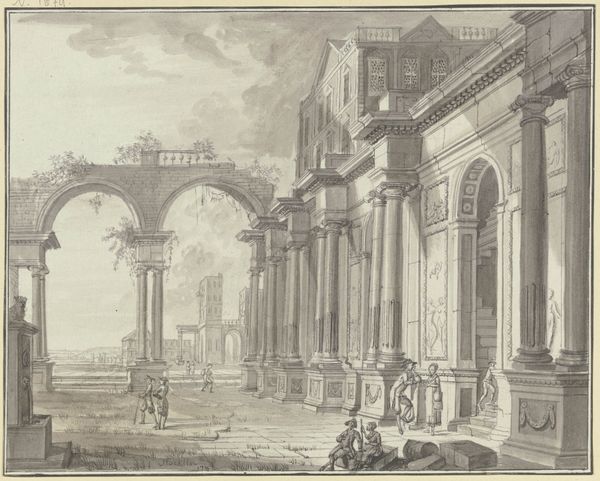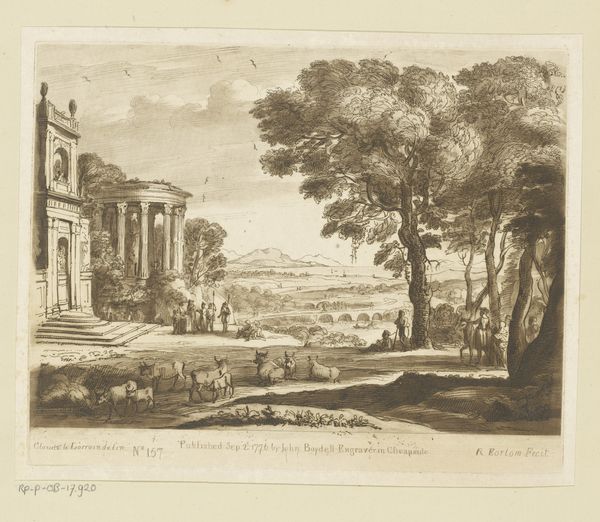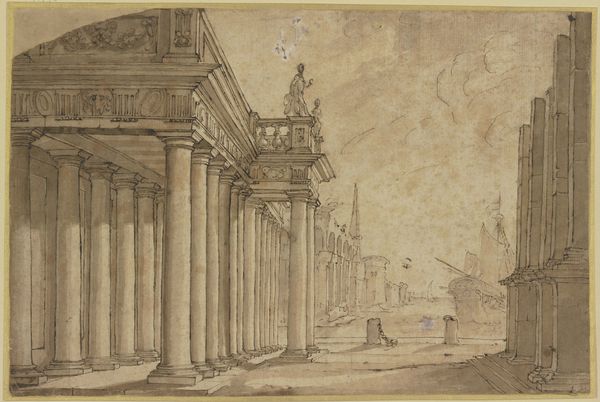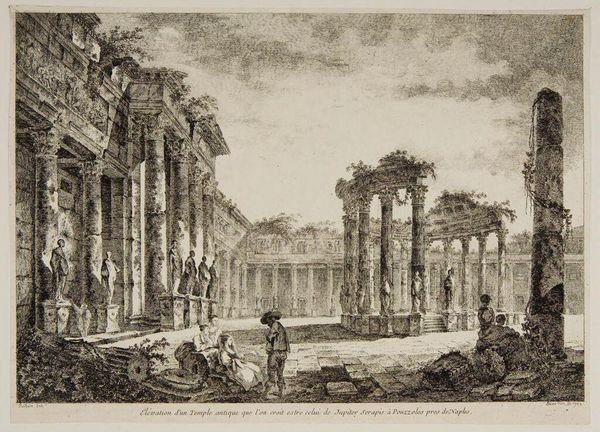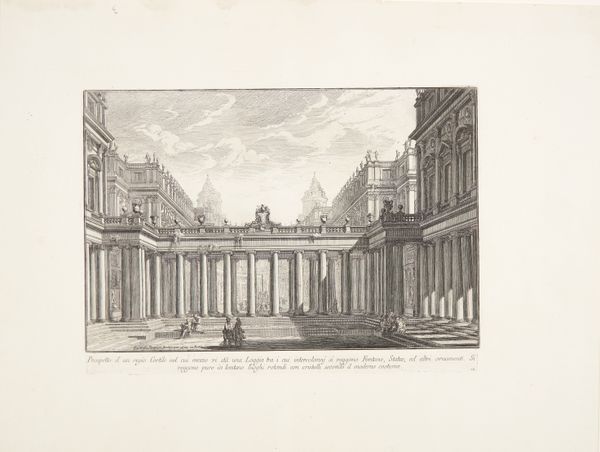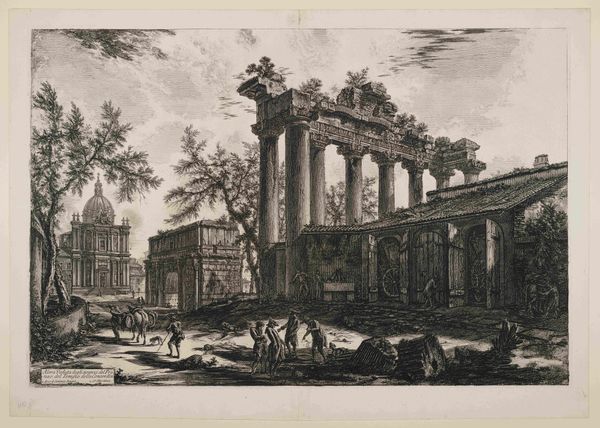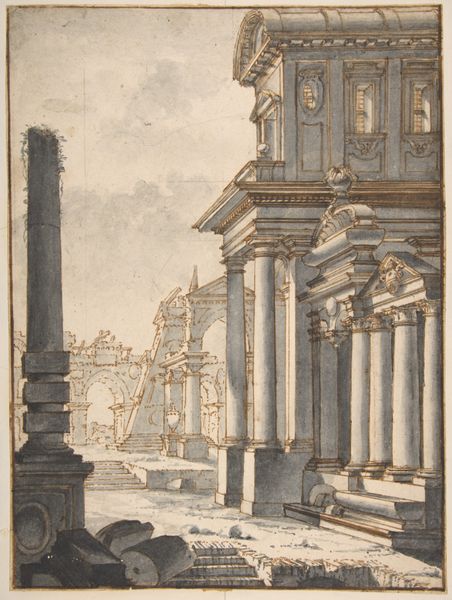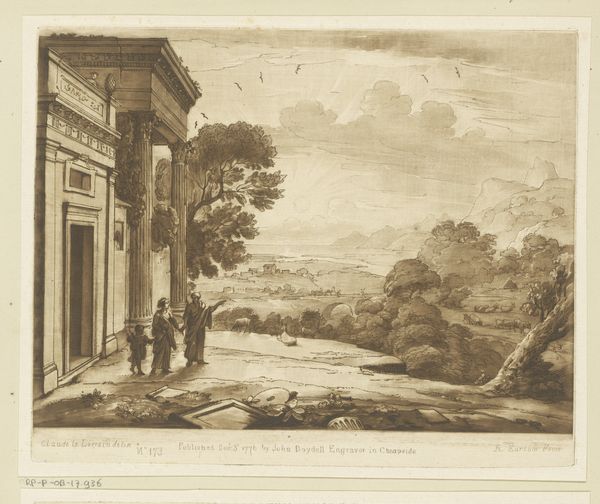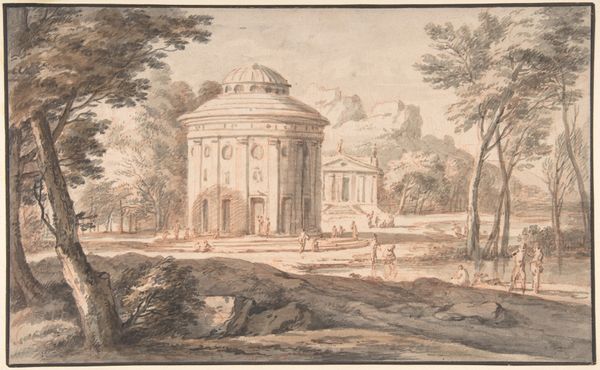
drawing, ink, architecture
#
drawing
#
landscape
#
ink
#
classicism
#
architecture
Copyright: Public Domain
Curator: I am immediately drawn to the delicate line work in this drawing, its wistful, almost melancholic mood. Editor: Indeed. What you’re responding to is perhaps rooted in the subject matter. Here we have “Palastruine, links ein Obelisk” by Christian Stöcklin. The medium appears to be ink on paper, a study in ruins rendered with precision. Curator: The title itself tells a story, doesn’t it? Palace ruins… an obelisk standing off to the side. There's a tension between the grand architectural past and the inevitability of decay. The architectural style screams Classicism, doesn't it? I wonder about Stöcklin’s context. Editor: Absolutely. Consider the time periods of Neoclassicism, often linked with social and political upheaval as old power structures crumbled. It speaks to larger questions about power, history, and memory. Look how nature reclaims these spaces—vines creeping up columns, vegetation growing on roofs. Curator: The crumbling structures act like stagecraft framing that far horizon, I’m wondering where it might be or reference. I appreciate the delicate ink wash. Notice the contrast; the artist's careful precision with structural details and looser brushstrokes rendering organic elements like that tree. I like how it feels incomplete, a bit romantic but with a melancholy. Editor: And perhaps, a bit subversive, no? Classicism, with its associations of order and authority, is juxtaposed with decay and ruin. Might this suggest that even the most powerful structures are destined to fall, that there is inherent instability built into the social and political systems? The starkness forces us to reckon with mortality and change. It's both beautiful and unsettling. Curator: Seeing the drawing, its composition and style gives us a chance to ponder, too, on the history of Classicism as style and the ideologies surrounding it, as well as the long art-historical convention of “ruinscapes.” I leave considering the powerful, and often difficult, historical role this aesthetic of decay performs. Editor: I concur. Stöcklin invites us into this reflection. Let’s allow his melancholic landscape of “Palastruine, links ein Obelisk” to be more than just ink on paper but a mirror reflecting larger societal concerns of time and power.
Comments
No comments
Be the first to comment and join the conversation on the ultimate creative platform.


